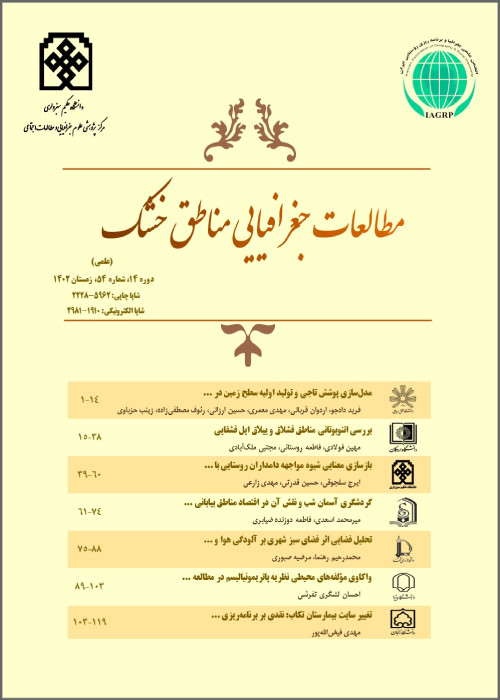Evaluation of social livability components and their interpretive structural modeling, case study: Qaen city
In the current century, known as the century of cities, a significant part of the world's population lives in cities and the trend of increasing urbanization continues. In such circumstances, the important question is to what extent cities are suitable places for human life. Hence, the concept of urban livability and livable city has become one of the most widely used concepts in urban studies. A livable city is a city that provides suitable living conditions from various economic, social and environmental dimensions. A neighborhood or city is socially livable when it provides a sense of security, sense of belonging and place identity, social interactions, participation, social cohesion, and etc. Addressing livability indicators can be a criterion for the sustainability of cities, their success and a guide for urban planning and management. The main purpose of this study is to assess the situation of social livability in Qaen city and Interpretative structural modeling (ISM) of social livability components. Qaen city with a population of about 43,000 people (according to the 2016 census), is the second city in South Khorasan province located in east of Iran.
This study is an applied research in terms of purpose and descriptive-analytical in terms of approach. The field method has been used to measure the social livability status. The collection of data tool is a questionnaire. The statistical population of the study is the population over 15 years old in Qaen city and the sample size is 360 people using Cochran's method. Components of social livability in this study include social trust, social participation, cohesion, social interaction, place attachment, feeling of security, social norms, education and public awareness. One-sample t-test was used to analyze and measure the status of these components, and interpretative structural modeling (ISM) was used for modelling of these components. For structural-interpretive modeling, the opinions of 20 experts were collected by a questionnaire.
A one-sample t-test was used to analyze the mean of each component of social livability. Considering that in the design of the questionnaire items, the 5 Likert spectrum including very low (with code 1), low (code 2), medium (code 3), high (code 4) and very high (code 5) has been used; in this test, the mean of the variables was compared with the mean (3), which is test value. The results of one-sample t-test showed that mean of components of security and place attachment in Qaen city are above test value (3). In fact, this city can be considered a city with high security and place attachment. In contrast, the components of social interaction, trust, cohesion, participation and social norms have mean below test value .Low levels of trust, cohesion and social participation could be considered as barriers to the development and livability of the city. Especially that, according to the results of this study, citizens' trust in urban management is low and this can be an obstacle for citizens to participate with urban management in urban development projects. The findings of this study also indicate that the component of education and awareness is at a moderate level.The interpretative structural modeling (ISM) indicated that the research model consists of 4 levels. The most effective is the fourth level, which includes two factors of social cohesion and sense of place attachment. This level directly affects the third level factors, namely social interactions and public awareness. Third level also directly affects on the second level, which includes the observance of social norms in the community and social trust, and also the second level factor has a direct effect on the components of the first level, which is social participation and individual and social security.The results of MICMAC analysis of the identified components showed that components of social interaction, education and public awareness are in the autonomous cluster; these components have weak influence and dependence.
In the dependent cluster, the components are social participation, personal and social security, which have weak influence but high dependence and effectiveness. In the linkage cluster is social trust. Finally, the key cluster includes the components of a place attachment, cohesion, and social norms. These components have high driving power and low dependence; and these components are needed first to create social livability.
According to this study, in general, the level of social livability in the city of Qaen is assessed as moderate level. Among the eight components of social livability, the two components have a higher than average mean: sense of security and place attachment. Awareness and education are moderate, and the components of participation, interaction, norms, and social cohesion are low.
The results of the interpretive structural modeling of social livability of this city showed that among these components, sense of place attachment and social cohesion are the most basic components affecting on urban social livability that should be emphasized at the first level.
- حق عضویت دریافتی صرف حمایت از نشریات عضو و نگهداری، تکمیل و توسعه مگیران میشود.
- پرداخت حق اشتراک و دانلود مقالات اجازه بازنشر آن در سایر رسانههای چاپی و دیجیتال را به کاربر نمیدهد.


